Music marked "New!" in gold type is a new publication. Music marked "New!" in teal type is new to our stock.
![]()
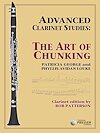
|
 C2574: Advanced Clarinet Studies: The Art of Chunking by Patricia George and Phyllis Avidan Louke, clarinet edition by Rob Patterson. Theodore Presser Co., 2014/2017, SB, 150 pages. While not a new concept, Advanced Clarinet Studies: The Art of Chunking presents the first and only method for clarinetists to master the process of "chunking" (working on small groups of notes at a time) as a practice technique. Through exploration of technical studies, etudes, preludes, cadenzas, and orchestral excerpts, the clarinetist is introduced to basic and advanced chunking techniques to facilitate reading and tone development. Exercises for articulatiom, intonation, dynamics, and tone development are also integrated into the innovative curriculum. Click on the cover image for a more detailed explanation. C2574: Advanced Clarinet Studies: The Art of Chunking by Patricia George and Phyllis Avidan Louke, clarinet edition by Rob Patterson. Theodore Presser Co., 2014/2017, SB, 150 pages. While not a new concept, Advanced Clarinet Studies: The Art of Chunking presents the first and only method for clarinetists to master the process of "chunking" (working on small groups of notes at a time) as a practice technique. Through exploration of technical studies, etudes, preludes, cadenzas, and orchestral excerpts, the clarinetist is introduced to basic and advanced chunking techniques to facilitate reading and tone development. Exercises for articulatiom, intonation, dynamics, and tone development are also integrated into the innovative curriculum. Click on the cover image for a more detailed explanation. |
|
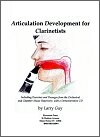
|
 C2385: Articulation Development for Clarinetists by Larry Guy. Rivernote Press, 2016, SB, 137 pages + CD. This is an extensive textbook by Larry Guy covering all aspects of clarinet articulation. It includes Building the Foundation: Air Stream and Embouchure, The Attack, The Short Staccato, Benefits of Short Note Study, The Variety of Articulated Style, Developing the Quality of Articulated Sound, The Norm and Variance from It, Reed and Mouthpiece Considerations, Exercises to Develop Articulation Stability and Endurance, Acquiring Speed with Accuracy, Famous Articulated Passages and Suggestions to Air in the Mastery of Them, Multiple Tonguing: Double and Triple Tonguing, and Harold Wright Articulation Warmups. Includes demonstration CD. Click on the cover image to view the complete Table of Contents. C2385: Articulation Development for Clarinetists by Larry Guy. Rivernote Press, 2016, SB, 137 pages + CD. This is an extensive textbook by Larry Guy covering all aspects of clarinet articulation. It includes Building the Foundation: Air Stream and Embouchure, The Attack, The Short Staccato, Benefits of Short Note Study, The Variety of Articulated Style, Developing the Quality of Articulated Sound, The Norm and Variance from It, Reed and Mouthpiece Considerations, Exercises to Develop Articulation Stability and Endurance, Acquiring Speed with Accuracy, Famous Articulated Passages and Suggestions to Air in the Mastery of Them, Multiple Tonguing: Double and Triple Tonguing, and Harold Wright Articulation Warmups. Includes demonstration CD. Click on the cover image to view the complete Table of Contents. |
|
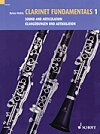
|
C1307: Clarinet Fundamentals 1: Sound and Articulation by Reiner Wehle. Schott, 2008, PB, 128 pages. This book is part of a new series by Reiner Wehle, professor at the Music Academy of Lübeck, member of Trio di Clarone, and husband of Sabine Meyer. Includes sections devoted to practicing, breathing and posture, legato exercises, sound exercises, articulation, clarinet reeds and recommended reading. This book is in English and German and covers both the Boehm and Oehler system instruments. | |
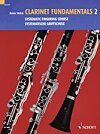
|
C1308: Clarinet Fundamentals 2: Systematic Fingering Course by Reiner Wehle. Schott, 2008, PB, 136 pages. The second book in this series by Reiner Wehle. It does not include a fingering chart but is a comprehensive course made up of short exercises and examples from the literature emphasizing various notes and fingering combination. It includes examples from the Mozart clarinet concerto for basset clarinet. In English and German and covering all fingering problems in great detail for the Boehm and Oehler systems. |
|
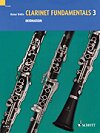
|
C1309: Clarinet Fundamentals 3: Intonation by Reiner Wehle. Schott, 2008, PB, 112 pages. This book explains both the theory and practice of intonation (in English and German) and has many intonation exercises in duet form with a few as trios. This is followed by 29 pages of examples from the orchestral repertoire of (mostly) two clarinets playing in harmony, octaves, and unison. |
|
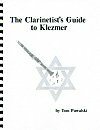 |
C061: The Clarinetist's Guide to Klezmer by Tom Puwalski, SB, 75 pages. This is a how to book for Clarinetists who want to learn how to perform "traditional" Klezmer. It includes 16 transcriptions of the recordings of Dave Tarras and Naftule Brandwein. Contents include: What is Traditional Klezmer?, Types of Klezmer Music, Klezmer Ornamentation, I Just Pulled the Clarinet Out of the Closet After 25 Years and Want to Play, How Can I Learn To Play Klezmer Music?, Using This Book and Musical Examples, Thoughts on Putting Together a Band, Resources, etc. | |
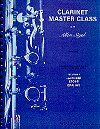
|
C016: Clarinet Master Class by Allen Sigel. SHALL-u-mo Publications, SB, 78 pages. The clarinet teacher and former principal of the Buffalo Philharmonic has created master lessons and etudes based on six solo works by Mozart (Concerto K. 622) , Weber (Concertino and Concerto No. 2), Spohr Concertos No. 1 and No. 2), and Brahms (Sonata in F Minor Op. 120, No. 1). Lessons include such topics as stylistic features, ensemble problems, musical and technical problems, dynamics, etc. The author provides recommended fingerings throughout the text. | |
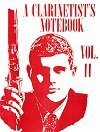
|
C134: A Clarinetist's Notebook Vol. II: The Value of Fundamentals by Robert Schmidt. 1971, SB, 204 pages. This book contains a variety of resources originally used with university students including basic techniques, clarinet literature and book listings, the 24 Albert scales, and symmetrical scale and chord patterns. Most of the technique information has two pages on one page resulting in some small print. | |
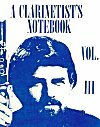
|
C135: A Clarinetist's Notebook Vol. III: Concepts of Rhythm by Robert Schmidt. 1977, SB, 154 pages. This book has been designed as self instruction course on tempo and rhythm. | |
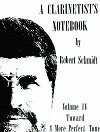
|
C136: A Clarinetist's Notebook Vol. IV: Toward a More Perfect Tone by Robert Schmidt. 1984, SB, 154 pages. This book covers the subjects of tone, intonation, articulation, the altissimo, relaxation, phrasing, practicing, some interesting articles written by Daniel Bonade in the 1950s and more. | |
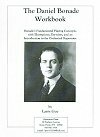
|
C338: The Daniel Bonade Workbook by Larry Guy. Rivernote Press, 2004, Second Edition 2005, 110 pages. Daniel Bonade was arguably the greatest American clarinet teacher and certainly one of the greatest orchestral clarinetists of the 20th century. This workbook will reacquaint clarinetists with Bonade's fundamental playing concepts. It covers the tonal ideal, the study of legato, phrasing, articulation, coordination and control, conquering technical passages, Bonade's comments on orchestra excerpts, equipment (reeds and ligatures), Bonade's aesthetics, and studies based on Klose and Charpentier compiled by Bonade and Lefebve. The CD, The Legacy of Daniel Bonade is suggested for use with this book. | |
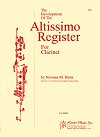
|
C1439: The Development of the Altissimo Register for Clarinet by Norman M. Heim. Kendor Music, 1976, SS, 28 pages. This book is intended for use with students to improve their ability to play in the altissimo register. It includes exercises for smaller and larger intervals and ten etudes for practice. Some fingerings are provided. |
|
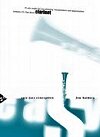
|
C1444: Easy Jazz Conception Clarinet by Jim Snidero. Dan Block clarinet with rhythm section. Advance Music, 2000, SS, 40 pages + CD. This is the entry level book (although the difficulty level isn't much different than Jazz Conception, 21 Solo Etudes). It has 15 solo etudes for jazz phrasing, interpretation and improvisation. The CD includes performances of each piece with the soloist and rhythm section and of the rhythm section alone. Includes a brief introduction that discusses phrasing and ways this book can be used. | |
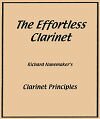
|
C899: The Effortless Clarinet by Richard Nunemaker. Richard Nunemaker, 2006, SS, 27 pages. This booklet by Richard Nunemaker, clarinetist, bass clarinetists, and saxophonist with the Houston Symphony since 1967, represents a distillation of the principles he has learned in his 40+ years as a professional. It covers: How to Hold the Clarinet, Breathing, Embouchure, Long Tones, Overtone Exercises, Mouthpiece Excises, Scales and Chords, Reeds, Tonguing/Staccato, Intonation, Sight-Reading, How to Practice, and Preparing for a Lesson, Audition or Performance. (Except other items with free shipping.) |
|
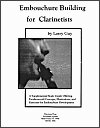
|
C047: Embouchure Building for Clarinetists by Larry Guy. Rivernote Press, 10th Edition, 2011, SB, 102 pages. This handbook was originally designed for teachers and intermediate-level clarinetists. In the most recent editions the author has added information of a more advanced nature. Chapters include The Function of the Embouchure, the External Embouchure, Building the Muscles of the Lips, Building the Air Support Mechanism, An Introduction to Vowel Concepts, for Tonal Purity, A Vowel Concept for the Lips, The Internal Embouchure--Tongue Position Development, How a Good Embouchure Affects Articulation, Developing the Upper Lip, and Fundamental Concepts Set Forth in this Handbook. Includes many diagrams, photos, and musical exercises. |
|
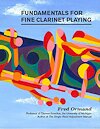 |
 C2557: Fundamentals for Fine Clarinet Playing by Fred Ormand. Fred Ormand, 2017, SB, 114 pages. This is a new book by Fred Ormand who among his many honors and positions, may be best know for his 23 yeas at the University of Michigan School of Music, Theatre and Dance. David Shifrin's introduction to this book states "...21st century clarinetists can find [in this book] the tools, tips, and a step by step method of how to grow from playing the clarinet well to being an artist." The subjects covered in the chapters and appendices include: Putting the Wind in this Wind Instrument; Embouchure: Connecting to Player to the Instrument; Facility, or Efficient Fingers; Articulation, or the Unseen Technique; Putting It All to Use; The Complete Clarinetist; Practice Techniques for the Aspiring Clarinetist; Selecting and Maintaining Your Instrument; Concluding Thoughts and Advice; Biographies of Teachers; The Five-Note Scale Exercise; and Some Books of Interest to the Aspiring Clarinetist. C2557: Fundamentals for Fine Clarinet Playing by Fred Ormand. Fred Ormand, 2017, SB, 114 pages. This is a new book by Fred Ormand who among his many honors and positions, may be best know for his 23 yeas at the University of Michigan School of Music, Theatre and Dance. David Shifrin's introduction to this book states "...21st century clarinetists can find [in this book] the tools, tips, and a step by step method of how to grow from playing the clarinet well to being an artist." The subjects covered in the chapters and appendices include: Putting the Wind in this Wind Instrument; Embouchure: Connecting to Player to the Instrument; Facility, or Efficient Fingers; Articulation, or the Unseen Technique; Putting It All to Use; The Complete Clarinetist; Practice Techniques for the Aspiring Clarinetist; Selecting and Maintaining Your Instrument; Concluding Thoughts and Advice; Biographies of Teachers; The Five-Note Scale Exercise; and Some Books of Interest to the Aspiring Clarinetist. |
|
 |
C844: Hand and Finger Development for Clarinetists by Larry Guy. Larry Guy, 2007, SB, 96 pages. The purpose of this book is to help clarinetists improve their finger speed and accuracy through the use of proper hand position, efficient finger motions, and correct fingerings. The book includes preliminary exercises, hand and finger fundamentals (in theory and practice), additional technical concepts, fingering guidelines, support of the air, the role of the embouchure, slow legato, note pattern comprehension, and mastering fast passages. The book has many illustrations and musical examples and exercises. | |
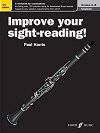 |
 C2593: Improve Your Sight-Reading by Paul Harris. Faber Music, 2017, SS, 39 pages. This book doen't fit neatly into any of our categories. It is intended to be used to prepare for the Associated Board of the Royal Schools of Music (ABRSM) site reading examinations. But in addition to this use, it provides many short exercises that will be useful to advancing high school and even early college level students. It has sections for each of the ABRSM grades 6, 7, and 8. It includes odd time signatures, keys with 4 flats or sharps and more, and other technical excersises. Click on the cover image to view sample pages from the book. C2593: Improve Your Sight-Reading by Paul Harris. Faber Music, 2017, SS, 39 pages. This book doen't fit neatly into any of our categories. It is intended to be used to prepare for the Associated Board of the Royal Schools of Music (ABRSM) site reading examinations. But in addition to this use, it provides many short exercises that will be useful to advancing high school and even early college level students. It has sections for each of the ABRSM grades 6, 7, and 8. It includes odd time signatures, keys with 4 flats or sharps and more, and other technical excersises. Click on the cover image to view sample pages from the book. |
|
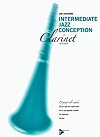
|
C1446: Intermediate Jazz Conception Clarinet by Jim Snidero. Ken Peplowski clarinet with rhythm section. Advance Music, 2005, SS, 48 pages + CD. 15 original jazz etudes with chords. The CD includes performances of each piece with the soloist and rhythm section and of the rhythm section alone. This book has some additional instructional material on jazz playing. |
|
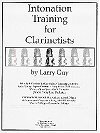
|
C029: Intonation Training for Clarinetists by Larry Guy. Rivernote Press, SB, 60 pages. Subjects include the general intonation problems of the clarinet and helpful fingerings, using a tuner, embouchure flexibility and the use of air, reeds and equipment. Also covered are pitch problems specific to the A, Eb and bass clarinet and some useful fingering for these instruments. The book includes many music examples, fingering diagrams, and other illustrations. | |
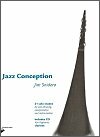
|
C1445: Jazz Conception, 21 Solo Etudes Clarinet by Jim Snidero. Ken Peplowski clarinet with rhythm section. Advance Music, 1996, SS, 40 pages + CD. This is the entry level book in this series which has 21 original jazz etudes with chords. The CD includes performances of each piece with the soloist and rhythm section on on separate stereo channels. |
|
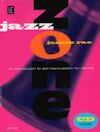
|
 C2633: Jazz Zone Clarinet by James Rae. James Rae clarinet with rhythm section. Universal Edition, 2017, SS, 31 pages + CD. Subtitled "An introduction to jazz improvisation for clarinet." For clarinet students approaching the mystical world of improvisation, let James Rae guide you in your first steps. First and foremost, listening to jazz is the finest teacher, and the included audio CD will help greatly. "Don't expect to produce a world class solo immediately. Everyone has to begin somewhere," he says, as he then introduces different rhythms and styles. Rae brings his incredible background in performing and teaching to bear in pieces in rock, swing, and jazz rhythms. This book has a combination of music and explanations (in English, German and French) of the jazz techniques and scales used to perform them. The CD includes both complete performances and the accompaniments alone. Click on the cover image to view the first page of music. C2633: Jazz Zone Clarinet by James Rae. James Rae clarinet with rhythm section. Universal Edition, 2017, SS, 31 pages + CD. Subtitled "An introduction to jazz improvisation for clarinet." For clarinet students approaching the mystical world of improvisation, let James Rae guide you in your first steps. First and foremost, listening to jazz is the finest teacher, and the included audio CD will help greatly. "Don't expect to produce a world class solo immediately. Everyone has to begin somewhere," he says, as he then introduces different rhythms and styles. Rae brings his incredible background in performing and teaching to bear in pieces in rock, swing, and jazz rhythms. This book has a combination of music and explanations (in English, German and French) of the jazz techniques and scales used to perform them. The CD includes both complete performances and the accompaniments alone. Click on the cover image to view the first page of music. |
|
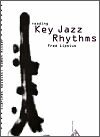
|
C1443: Reading Key Jazz Rhythms Clarinet by Fred Lipsius. Advance Music, 1996, SS, 68 pages + CD. This is a collection of 24 easy to medium level jazz etudes, and 24 simplified guide tone versions of the etudes. They are ideal for learning the basic language of jazz, swing phrasing, and articulation. The guide tone etudes (guide tones are the essential or defining notes for each given chord type) are followed by a melodious version as the chord changes might actually be performed (the rhythms are the same in both versions). On the accompanying CD the soloist (Ramon Ricker) demonstrates the 24 melodious etudes together with a professional rhythm section. You can also improvise along with the play-along tracks using the chord symbols. So if improvising is new to you and you find yourself getting lost, you can always return to a guide tone and play rhythmically around it. Any etude and its corresponding simplified guide tone version can be played together as a duet (with or without the CD accompaniment). | |
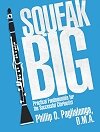
|
 C2323: Squeak Big, Practical Fundamentals for the Successful Clarinetist by Phillip O. Paglialonga. Imagine Music, 2015, SB, 109 pages. Squeak Big teaches aspiring clarinetists the fundamentals necessary for success on the instrument through conceptual development and practical exercises. The book is divided into four sections: Pedagogy (embouchure, sound, relaxation, homogeneous sound. altissimo, building technique, finger, legato, articulation and reeds), Effective Practicing, Daily Elements (scales), and Additional Resources. Click on the cover image to view the full Table of Contents. C2323: Squeak Big, Practical Fundamentals for the Successful Clarinetist by Phillip O. Paglialonga. Imagine Music, 2015, SB, 109 pages. Squeak Big teaches aspiring clarinetists the fundamentals necessary for success on the instrument through conceptual development and practical exercises. The book is divided into four sections: Pedagogy (embouchure, sound, relaxation, homogeneous sound. altissimo, building technique, finger, legato, articulation and reeds), Effective Practicing, Daily Elements (scales), and Additional Resources. Click on the cover image to view the full Table of Contents. |
|
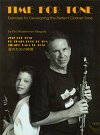
|
C1782: Time for Tone by Eva Wasserman-Margolis. Or-Tav, 1997, SS, 28 pages. Subtitled: Exercises for Developing the Perfect Clarinet Tone. This book has for 46 exercises with explanatory text. The text is in English, French, German, Spanish and Japanese. The exercises focus and intervals and dynamics and can be played by students at all levels. |
|
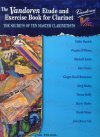
|
C650: The Vandoren Etude and Exercise Book for Clarinet, The Secrets of Ten Master Clarinetists. Carl Fischer, 2005, PB, 109 pages. Celebrating the 100th anniversary of the Vandoren Company, Carl Fischer Music has teamed up with ten of the world's finest clarinetists (Eddie Daniels, Paquito D'Rivera, Mitchell Estrin, Gary Foster, Ginger Kroft Barnetson, Greg Raden, Teresa Reilly, Harry Skoler, David Weber, and John Bruce Yeh), to produce a one-of-a-kind etude and exercise book in honor of this special anniversary. Each of these clarinet masters shares his and her inner secrets on how to play the clarinet. This eclectic collection covers Classical, Jazz, and Latin styles as well as etudes to develop tone, technique, lyricism and overall musicianship on the clarinet. |
|
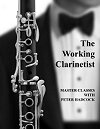 |
C043: The Working Clarinetist by Peter Hadcock edited by Bruce Ronkin, Aline Benoit and Marshall Burlingame. Roncorp Publications, 1999. SB, 212 pages. Subtitled Master Classes with Peter Hadcock. Hadcock, the late Assistant Principal and E-flat Clarinetist of the Boston Symphony Orchestra, describes this book as an attempt to put on paper what he learned during his forty-three years of playing the clarinet. The book is divided into four parts. The first part which represents three quarters of the book is annotated orchestral excerpts many of which are part of the standard audition repertoire. Part 2 covers many technical aspects of clarinet playing such as embouchure, articulation, intonation etc. Part 3 are master classes on Mozart's and Nielsen's clarinet concertos. The final section has trill and tremolo fingerings. Click on the cover image to view the list of excerpts. |
Bindings: HB: Hard Bound, PB: Perfect Bound (paperback with square spine), SS: Saddle Stitch (paper, folded and stapled), SB: Spiral Bound (plastic or metal)